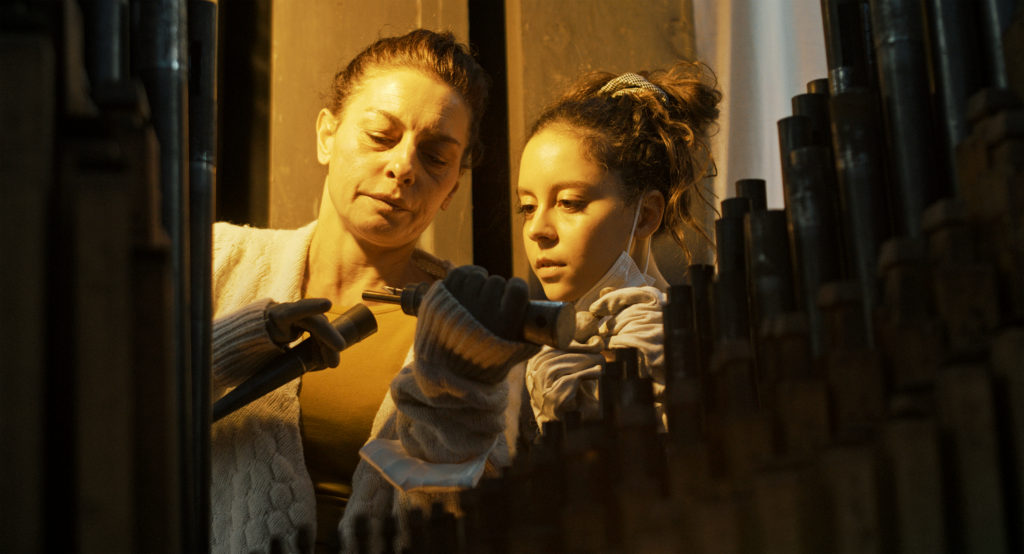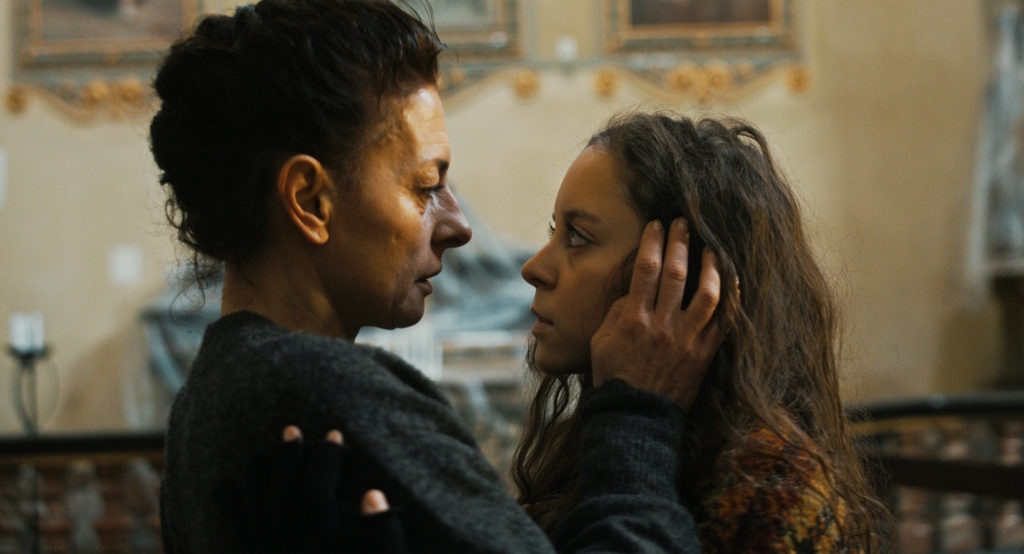
The Grand Bolero is set in winter 2020, early in COVID’s devastating assault on Northern Italy. Roxanne (Lidia Vitale), a middle-aged organ restorer, is locked down in a centuries-old church, along with her client Paolo (Marcelli Mariani). Lucia (Ludovica Mancini), a runaway young mute woman with no place else to shelter, arrives at the church. In an act of kindness, Paolo brings her into the church as an assistant to Roxanne. A salty curmudgeon, Roxanne cruelly resists, even when Palolo chides her, “you know what it’s like to be scared and alone.”
Indeed, Roxanne is a solitary person in a solitary profession, moving from church to church to repair the ancient organs.
But Lucia’s unexpected musical gift unlocks appreciation and then passion in the older woman. Passion evolves into obsession, propelling the story to an operatic finale.

The Grand Bolero is the most visually beautiful film that I’ve seen in some time. The interior scenes evoke the warmth of candlelight. The characters find relief from the lockdown in stroll through natural beauty characters find comfort in exteriors in the bright crispness of the northern Italian winter. It’s a remarkable first feature for director, co-writer and editor Gabriele Fabbro and his cinematographer Jessica La Malfa.
The all-absorbing power of organ music naturally complements a story of passion. Roxanne becomes transfixed as she watches Lucia’s bare shoulders heaving at the organ. The story climaxes as the dialogue is drowned out by an organ performance of Ravel’s Bolero.
The Grand Bolero is in competition for Best Narrative Feature at Cinequest and may be streamed through April 17 at Cinejoy.
